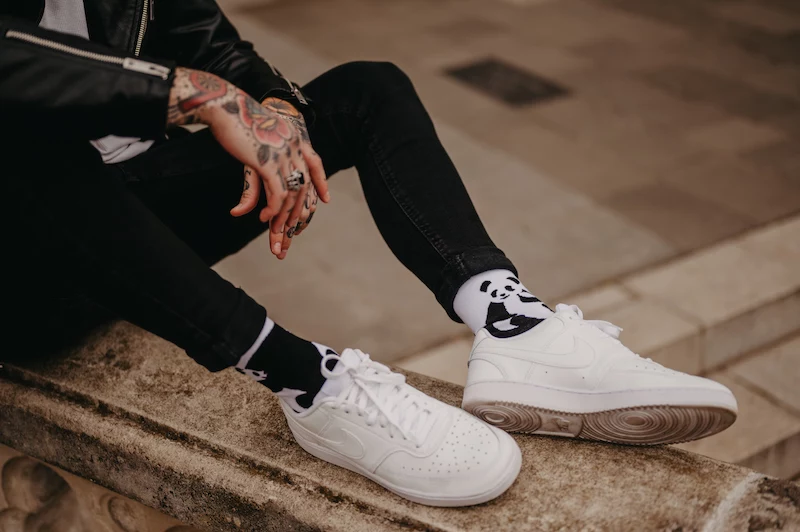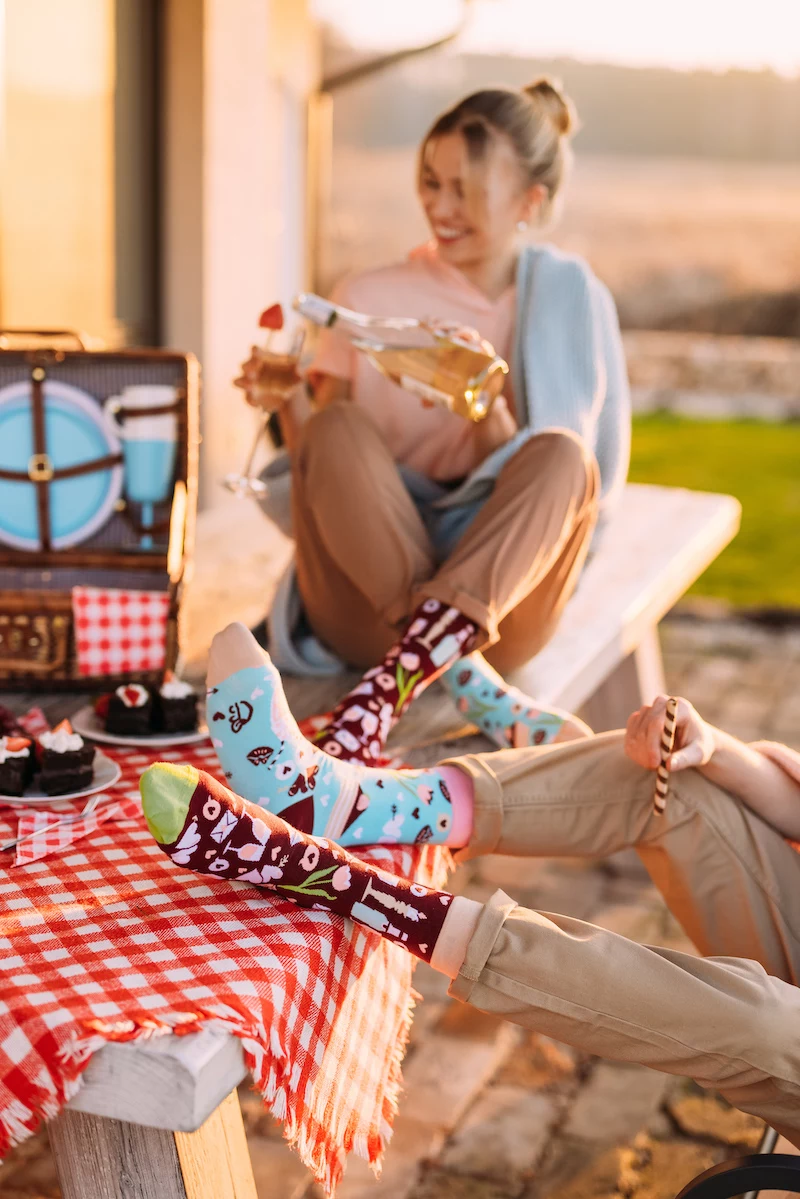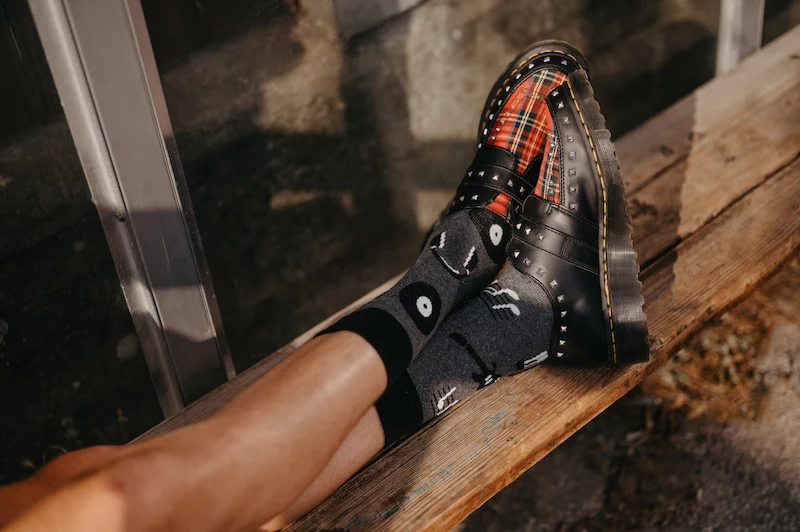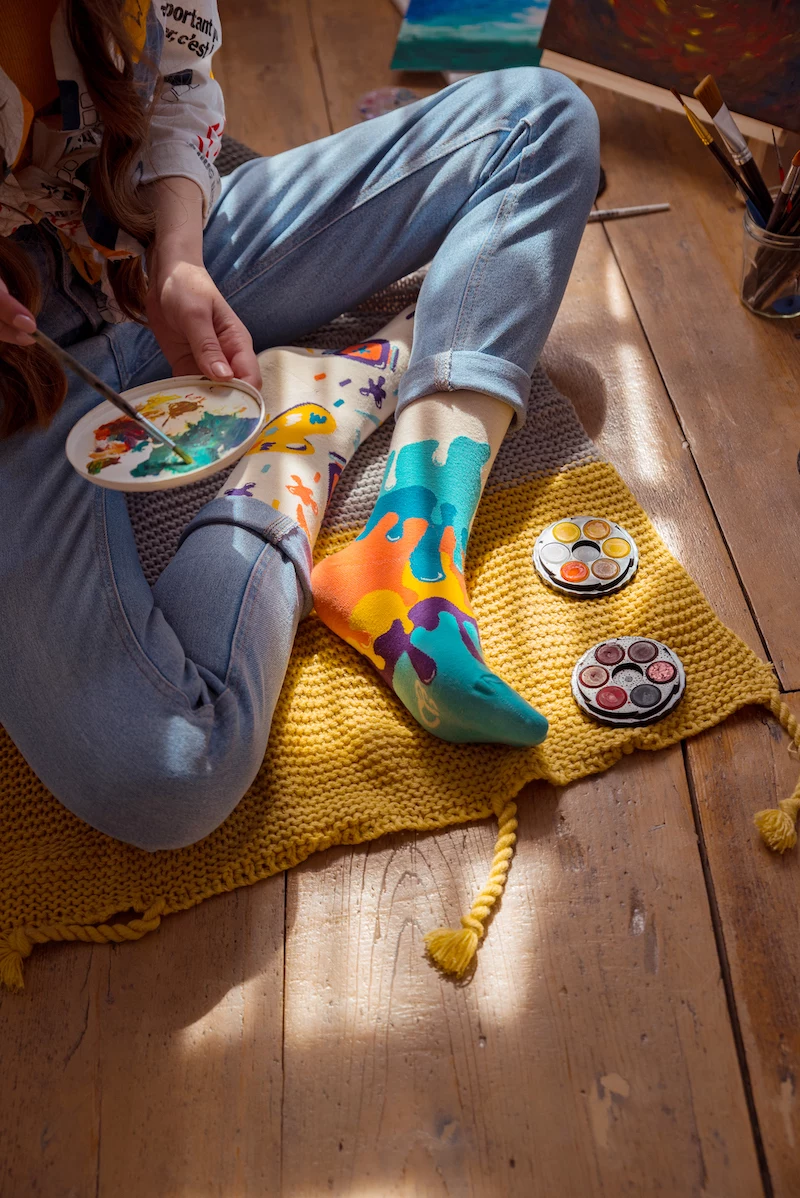Your Feet Deserve Better: The Real-Deal Guide to Buying Great Socks
I learned the true value of a good sock not in some fancy store, but halfway up a cold, wet mountain. I was younger and thought socks were just… socks. I’d slipped a cheap, cotton pair inside my expensive hiking boots, figuring the boots did all the heavy lifting. Boy, was I wrong.
In this article
A few hours in, my feet were a soggy, freezing, blistering mess. Every single step was agony. My guide, a seasoned pro, just shook his head. That night, he handed me a pair of his own merino wool socks for the rest of the trip, and the difference was night and day. My feet were suddenly warm, dry, and actually comfortable. That one experience taught me a lesson that has stuck with me my whole career: socks aren’t an accessory; they’re a critical piece of gear.
For years now, I’ve seen the ins and outs of how apparel is made. I’ve seen why some socks cost $5 and others cost $25, and I can promise you it’s not just clever marketing. It’s about the science of the fibers, the smarts in the construction, and designing for a purpose. This guide is everything I’ve learned, laid out to help you finally understand what makes a good sock so you can protect your feet and get real value for your money.

The Fibers: What Your Socks Are Actually Made Of
A sock’s performance starts with its ingredients. The blend of fibers is everything—it dictates how the sock handles sweat, manages temperature, and holds up to wear and tear. You can usually find the material blend on the cardboard packaging or a tiny tag sewn into the cuff.
Cotton: The Everyday Choice with a Major Flaw
Let’s be real, most of our sock drawers are full of cotton, and for good reason. It’s soft, it breathes okay, and it’s cheap. For just kicking around the house or a casual day at the office in dry weather, a decent cotton sock is totally fine. Look for Pima or Egyptian cotton if you want a softer, slightly more durable version.
But cotton has a fatal flaw: it’s a sponge. When your feet sweat—and by the way, your feet can sweat up to a cup of moisture a day!—a cotton sock soaks it all up and holds it right against your skin. A wet sock is a cold sock. Worse, that moisture softens your skin and causes the fabric to bunch up, creating the perfect storm for nasty blisters. This is why I practically beg people not to wear cotton socks for hiking, running, or any job where you’re on your feet all day.

Merino Wool: Nature’s Performance Fabric
When that guide handed me his merino socks, he was giving me a technical solution. Merino wool is an incredible natural fiber. Forget the itchy wool sweaters of your childhood; merino fibers are ultrafine, making them feel soft and comfortable directly on your skin.
But where it really shines is in its performance. It wicks moisture away from your skin, moving sweat to the outside of the sock so it can evaporate. It can hold a surprising amount of moisture before it even starts to feel wet. The natural crimp of the fibers also creates tiny air pockets, which insulate you in the cold but breathe when it’s hot. Oh, and it’s naturally antimicrobial, which is just a fancy way of saying it fights odor-causing bacteria. You can wear a good pair of wool socks for a couple of days on a trip without them smelling like a locker room. Try that with cotton.

The only real downsides are the cost and the fact that they dry a bit slower than pure synthetics. A good pair of merino hiking socks will likely cost you between $18 and $28. It sounds steep, but here’s the secret: many top brands offer a lifetime warranty. If you wear a hole in them, they’ll replace them. For free. Suddenly that $25 price tag seems like a pretty smart investment, doesn’t it?
Synthetics: The Durability and Dry-Time Champs
You’ll rarely find a sock that’s 100% synthetic. Instead, these man-made fibers are blended in to add specific superpowers.
- Nylon (or Polyamide) is the tough guy. It’s incredibly strong and resists abrasion. When you see a sock with a reinforced heel and toe, that’s almost always a healthy dose of nylon doing its job. It adds structure and makes the sock last way, way longer.
- Polyester is a moisture-managing beast. It repels water, pushing sweat away from your skin and drying lightning-fast. It’s a key ingredient in socks for running and high-sweat gym sessions. Heads up, though: polyester is known to hold onto odors more than wool.
- Elastane (also known as Spandex or Lycra) is the magic ingredient for fit. Just a tiny amount, usually 2-5%, gives a sock its stretch and, more importantly, its ability to snap back into shape. Without it, your socks would be sad, baggy messes by lunchtime.

The Anatomy of a Genuinely Good Sock
Okay, beyond materials, the way a sock is built is what separates the premium stuff from the bargain-bin junk. These are the details that scream quality.
1. The Cuff (or Welt)
The cuff’s job is to keep the sock up without cutting off your circulation. Cheap socks use a thin, tight band of elastic that digs in and gives up after a few washes. A well-made sock has a wider, more comfortable ribbed cuff that distributes pressure evenly and stays put all day. For dress socks, an over-the-calf design is the pro move—no bare leg when you sit down.
2. The Heel Pocket
A cheap sock is often just a tube, forcing your foot to do the work of creating a heel shape. This is why they slip down inside your shoe and wear out so fast. A quality sock has a deep, defined heel pocket that cups and locks onto your heel. This is one of the most important—and overlooked—features for a secure, comfortable fit.

3. The Toe Seam (This is the big one!)
Here’s a little challenge. Go grab a cheap sock and a good sock from your drawer right now. I’ll wait. Now, turn them both inside out. See that thick, ropey, nasty seam on the cheap one? That’s Blister City, my friend. It’s a major cause of rubbing and irritation.
Now look at the good one. The seam is probably almost perfectly flat, maybe even hard to find. This is a “seamless” or “flat-knit” toe, made with special machinery. It’s a hallmark of a sock that was built for comfort, and once you notice the difference, you can’t un-see it.
4. Cushioning (It’s Not Just for Fluff)
Cushioning isn’t just about feeling plush; it’s for protection and absorbing impact. It’s made from tiny terry loops, and the amount of cushioning tells you what the sock is for:
- Light Cushion: A bit of padding under the foot. Great for running or daily wear in warm weather.
- Medium Cushion: The go-to for most hiking socks. It’s the perfect balance of comfort, warmth, and protection.
- Heavy Cushion: The thickest padding out there. Designed for serious mountaineering or cold-weather work inside stiff boots.

5. Arch Support
That slightly tighter band of fabric around your midfoot isn’t just for show. This provides light compression that helps hold the sock in place, preventing it from twisting around on your foot. It can also help reduce foot fatigue after a long day.
A Few Good Places to Start Your Search
Okay, so where do you actually buy these magical socks? If you’re looking for top-tier hiking, skiing, or all-around great daily socks, you absolutely cannot go wrong with brands like Darn Tough and Smartwool. They specialize in merino blends and most of their stuff comes with that lifetime guarantee I mentioned.
For running and gym activities where you need superior moisture wicking, check out brands like Balega and Feetures. They are masters of the synthetic blend sock that hugs your foot perfectly.
And if you want a fantastic budget-friendly option? Honestly, the Kirkland Signature Merino Wool Trail Socks from Costco are legendary for a reason. They offer incredible value and are a great entry point into the world of quality wool socks.
How to Make Your Good Socks Last
Spending $25 on socks feels a lot better if they last for years. Proper care is key.
- Wash Them Inside Out. This is the most important tip. It cleans the sweaty, grimy inside of the sock more effectively and protects the durable exterior from getting beat up in the wash.
- Use Cool or Warm Water. High heat is the mortal enemy of elastane. Hot water will kill the stretch in your socks, leaving them saggy.
- Skip the Fabric Softener! This stuff coats performance fibers with a waxy film, completely destroying their ability to wick moisture. It’s like putting a raincoat on a sponge.
- Air-Dry if You Can. The intense heat of a dryer is tough on socks, especially wool. Laying them flat or hanging them to dry is best. If you must use a dryer, use the lowest heat setting possible.
Final Thoughts: An Investment in Your Foundation
It’s so easy to see socks as a boring afterthought. But I’ve seen it time and time again: the right pair can prevent injury, boost your performance, and provide a foundation of comfort that literally affects your entire day. A cheap sock is a false economy—it fails fast and performs poorly. A well-made sock is a true investment in your well-being.
The next time you’re shopping, take an extra minute. Look beyond the color, read the label, and check for that flat toe seam. Your feet will thank you for it.
Safety Disclaimer
Just a quick heads-up: the information here is for general knowledge. It’s not a substitute for real medical advice. If you have diabetes, neuropathy, circulation issues, or other medical conditions affecting your feet, you should always chat with a podiatrist or your doctor to find the right kind of hosiery for your needs. Using the wrong type, like high-compression socks without a medical reason, can cause problems.










